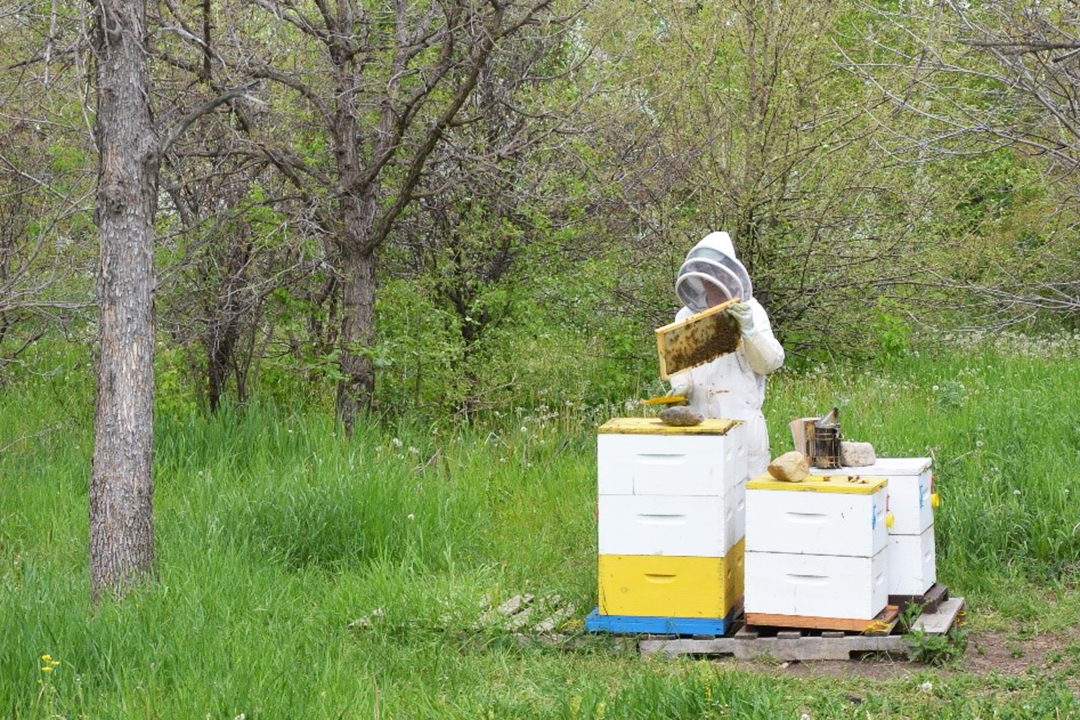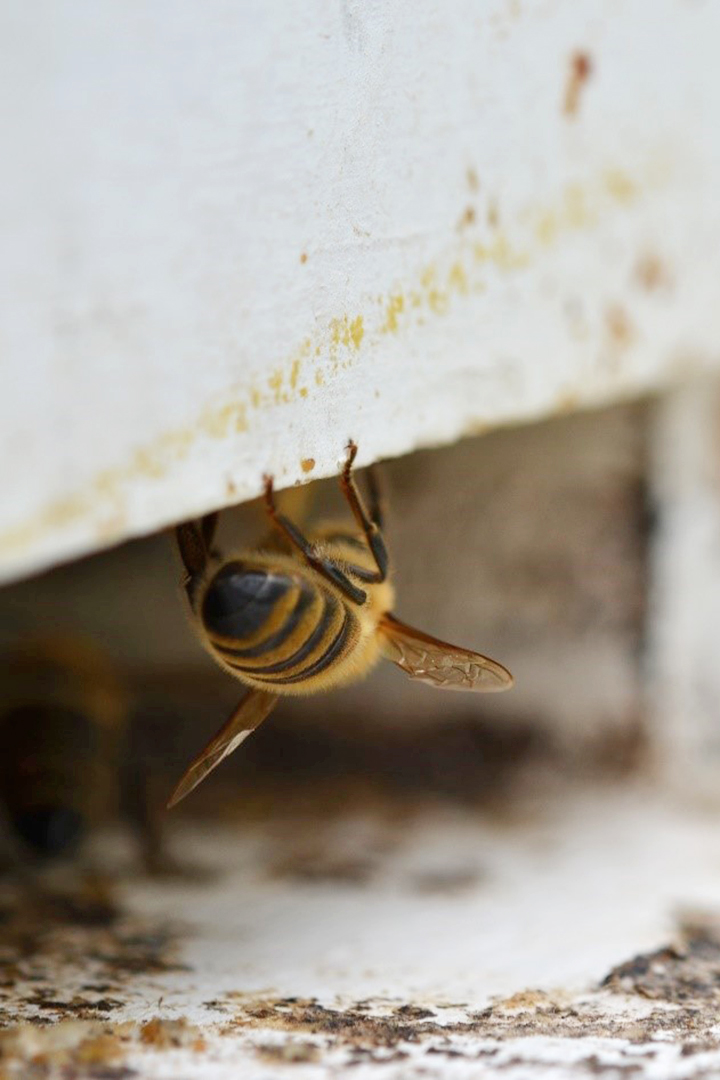
Bee health issues keep researchers busy
At the Western College of Veterinary Medicine (WCVM) a group of veterinary pathologists have devoted their time and attention to the health of the honey bee and their colonies.
By Esther Derksen
Talking about honey bees often conjures up sweet thoughts of golden honey, idyllic meadows and perhaps even a beekeeper or two.
But it turns out that bees need veterinarians, too.
“People need to understand that bees have many pests and pathogens just like any other species,” says Dr. Sarah Wood, a PhD student in veterinary pathology at the Western College of Veterinary Medicine (WCVM).
“They need care just like any other species — whether that be drug care or husbandry [or] taking care of the environment around them – we need specialists to be in charge of that care. Just because they are insects doesn’t mean we can ignore them.”
Wood is part of the WCVM’s new honey bee research group that’s led by veterinary pathologist Dr. Elemir Simko. His team of veterinary researchers and graduate students are breaking new ground, applying their training in vertebrate pathology to invertebrates such as honey bees.
They hope to characterize the possible physiological effects that chemicals such as neonicotinoids might be having on honey bees. Their work relies on histopathology techniques — using microscopes to examine bee tissues for visible abnormalities.
In recent years, headlines have been flooded with doomsday proclamations of declining bee numbers and the catastrophic effect that this would have on the global food supply. Insecticides are frequently labelled as the culprit, often accompanied with horror stories of entire apiaries wiped out after a neighbouring field was sprayed for pests.
The intersection between agriculture and ecology and between farmers and beekeepers has never been so apparent, and the health of bee populations is undeniably at risk. And it may be that neonicotinoids, a class of insecticides used on flowering crops – often used against flea beetles on canola crops grown in Western Canada – is partially to blame.
To learn more, WCVM researchers are performing studies of chemicals such as neonicotinoids on living, developing bee larvae and pupae. By exposing developing bees to varying doses in different chemical cocktails — all within the hive structure — researchers hope their study accounts for the complex social structure of bee colonies as well as varying weather conditions. Their investigation will look at what extent and in what way do various crop chemicals affect the development of honey bees.
The researchers are keenly aware of the close yet easily overlooked relationship between beekeepers and farmers.
“It’s about judicious use of pesticides and determining what is the safe dose, because we know that we need pesticides,” says Wood. “We need to find the dose range that is acceptable for pollinators, while at the same time, protecting crops.”
Honey production relies on flowering crops, but working alongside farmers has its challenges. Kevin Epp and Bryan and Gilbert Braun are beekeepers from Swift Current, Sask. All three agree that selecting suitable apiary sites is one of the biggest issues they contend with in their beekeeping operations. Good sites are ones that are isolated from fields routinely sprayed with chemicals — or ones where neighbouring farmers give advance notice about their crop spraying plans.
Epp says many of his fellow beekeepers have observed an overall reduction in the number of bees in their bee yards, and while this decline can’t be categorically attributed to increased chemical use in recent years, it does indicate that bees are at risk.
He adds that the health of the surrounding crops has an impact on bee colony success.
“If the growth is limited there, then so is our honey production – how the bees do in some ways mimics the crop,” says Epp.
Here lies the conundrum that faces many scientists, ecologists, farmers and beekeepers — and the problem identified by Wood. How can beekeepers protect their bees while farmers also protect their crops? The failure of one can cause the potential collapse of the other.
The ecological health of a place is certainly one of the foundational issues at stake. Gilbert Braun recalls back to the time before he and his family kept bees.
“I would always spray heavy for dandelions, but now … I realize dandelions are something for the bees, so that’s changed my thinking quite a bit for everything,” says Gilbert.
“Beekeeping makes you sensitive to the chemicals you put out there,” adds Gilbert’s son Bryan, who is part of the family’s beekeeping business. “[Bees] are like a mini society, so they are bringing in whatever we put into the environment. And then if it’s unhealthy, you kind of question what it is doing to us, too.”
“I think being a beekeeper makes you more aware of the ecology around you,” says Dr. Ivanna Kozii, another WCVM graduate student whose research work focuses on bee health. “You need to know what is growing and what it’s been treated with.”
Both beekeepers and scientists recognize that blaming pesticides for the overall fragility of the honey bee species simply doesn’t cover the complexity of issues facing the insect. In fact, researchers have identified that infestations of Varroa mites — external parasite that feed on honey bees — are one of the most immediate problems that beekeepers must deal with.
Instead of pointing fingers at only one issue, Wood suggests that the decline in honey bee populations and the health of colonies is the result of multiple problems.
“It’s not just one thing, but [it’s] lack of food diversity, increased pathogens, pesticides in the environment — all kinds of things play into overall immunosuppression and colony decline.”
Esther Derksen of Wymark, Sask., is a second-year veterinary student who was part of the WCVM’s Undergraduate Summer Research and Leadership program in 2017. Esther’s story is part of a series of articles written by WCVM summer research students.
